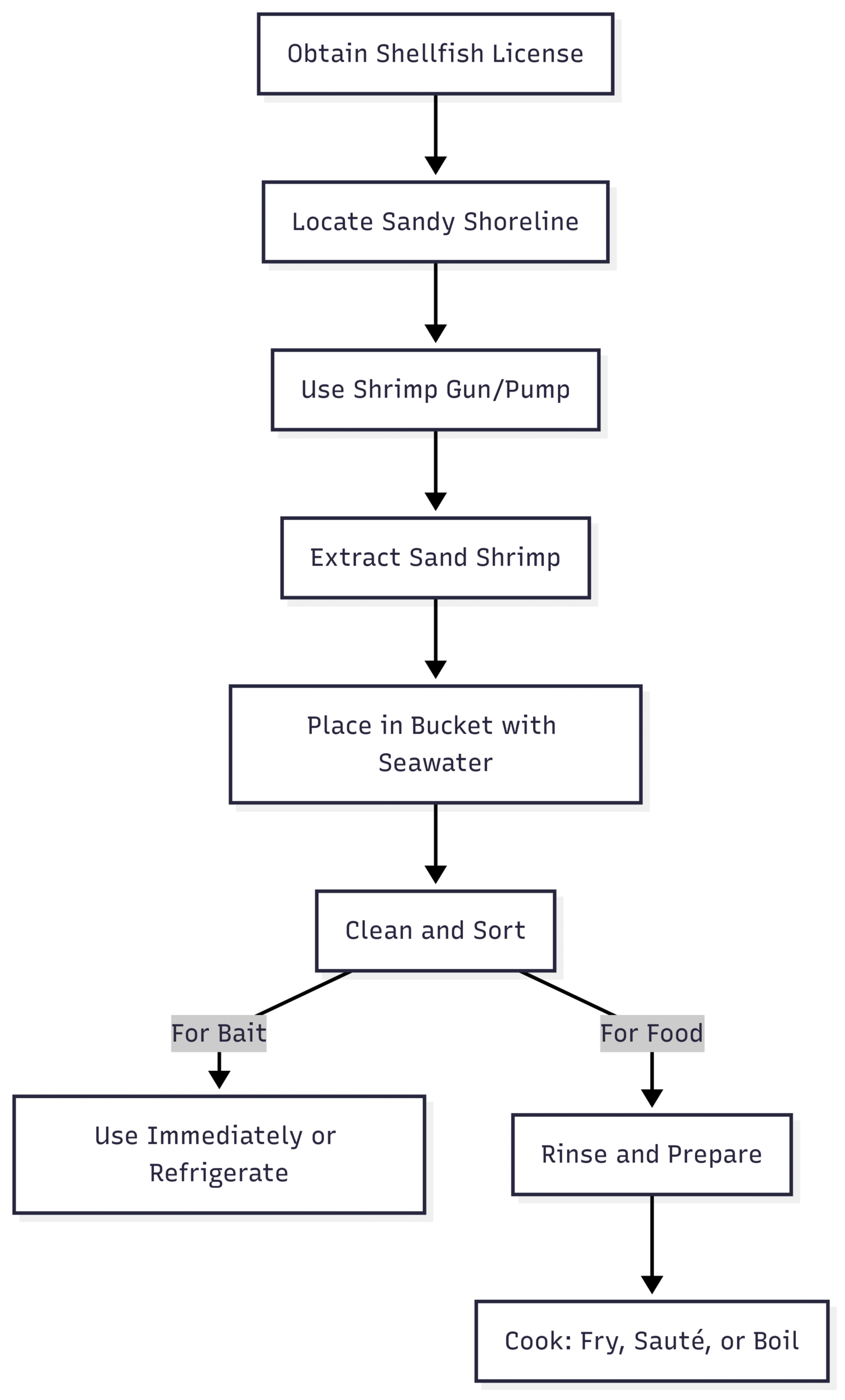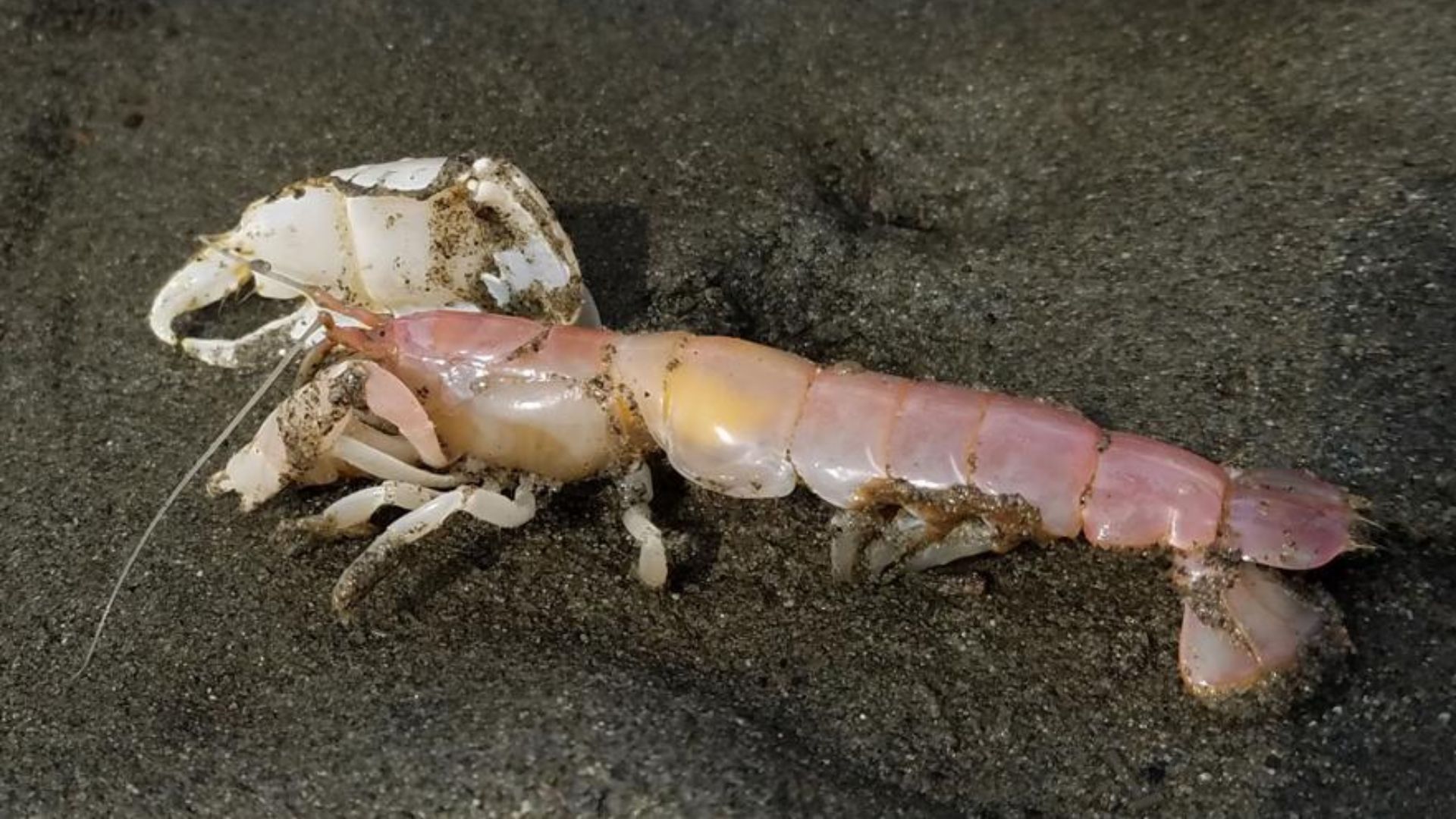Are Sand Shrimp Edible?
Discover if sand shrimp are edible, their taste, preparation methods, and primary use as fishing bait in this comprehensive guide.
Sand shrimp, commonly known as ghost shrimp or bay ghost shrimp, are small, translucent crustaceans often found burrowing in sandy beaches and shorelines. While they are a staple in the fishing world as highly effective bait, a growing curiosity surrounds their edibility. Can you eat sand shrimp? How do they taste? And how can they be prepared? This article delves into the culinary potential of sand shrimp, their primary role as bait, preparation methods, environmental considerations, and cultural perspectives, providing a thorough exploration for anglers, food enthusiasts, and curious minds alike.
What Are Sand Shrimp?
Sand shrimp (Callianassa species, often Callianassa californiensis) are small crustaceans, typically 2 to 4 inches long, with a semi-transparent body that ranges from white to pink or yellowish hues. They are characterized by one oversized claw, particularly in males, which can account for up to 25% of their body mass. These creatures inhabit sandy or muddy shorelines, digging intricate tunnel systems up to 30 inches deep, though they typically reside about a foot below the surface. Their diet consists of organic matter, which they consume while burrowing, contributing to the ecosystem by recycling nutrients.
Sand shrimp are abundant along coastlines, particularly in regions like the Pacific Northwest, where they are easily harvested using a specialized tool called a shrimp gun or pump. Their accessibility and effectiveness as bait make them a favorite among anglers targeting species like salmon, steelhead, perch, and rockfish.
Are Sand Shrimp Edible?
Yes, sand shrimp are edible for human consumption, though they are not a common culinary choice. Unlike larger shrimp species, such as those found in seafood markets, sand shrimp are smaller and have a higher proportion of shell and internal organs relative to meat. This composition leads to mixed opinions about their palatability. However, with proper preparation, sand shrimp can be a tasty and unique addition to the table, often compared to crawfish or soft-shell crab.
Taste Profile
The taste of sand shrimp varies depending on preparation and personal preference. Some describe their flavor as mildly sweet and briny, similar to crawfish or small shrimp, with a slightly nutty undertone. Others find the taste less appealing, particularly due to the “goo” or yellowish-orange internal contents, which can be off-putting to those unaccustomed to eating whole crustaceans. The texture is often highlighted as a key feature, especially when fried, offering a satisfying crunch akin to popcorn shrimp or soft-shell crab.
Cultural Perspectives
In many Asian cuisines, eating whole crustaceans, including their heads and internal contents, is common and celebrated. For example, the yellow “fat” inside crab shells or the heads of shrimp is considered a delicacy in some cultures. This perspective encourages adventurous eaters to embrace sand shrimp as a viable food source. In contrast, Western diners, particularly in the United States, may be more hesitant due to cultural squeamishness about consuming whole animals or bait species. However, as one angler noted, “They taste pretty similar to crawfish… I am sure a dip in garlic butter would be good too. Think of it as Bizarre Foods: Oregon Edition.”
Preparation Methods for Sand Shrimp
Sand shrimp can be prepared in various ways to enhance their flavor and texture. Below are some popular methods, drawing from culinary traditions and angler anecdotes:
1. Deep-Fried Sand Shrimp
- Description: Whole sand shrimp are soaked briefly in white wine or lemon juice, rolled in seasoned flour or a light batter, and deep-fried until crispy.
- Process:
- Rinse the shrimp thoroughly to remove sand and debris.
- Soak in white wine or lemon juice for 5-10 minutes to enhance flavor.
- Dredge in a mixture of flour, salt, pepper, and optional spices (e.g., paprika or cayenne).
- Fry in hot oil (350°F/175°C) for 2-3 minutes until golden brown.
- Serve with cocktail sauce, garlic butter, or a lemon wedge.
- Why It Works: Frying creates a crunchy exterior that contrasts with the soft interior, masking any “gooey” texture that might deter some eaters.
2. Butter Sautéed Sand Shrimp
- Description: A classic French-inspired method where sand shrimp are cooked whole in a brown butter sauce.
- Process:
- Clean the shrimp and pat dry.
- Melt butter in a skillet over medium heat until it begins to brown and emit a nutty aroma.
- Add the shrimp and sauté for 2-4 minutes, turning occasionally.
- Season with salt, pepper, and optional herbs like parsley or thyme.
- Serve as an appetizer or over a bed of greens.
- Why It Works: The rich, nutty flavor of brown butter complements the shrimp’s briny taste, creating a sophisticated dish.
3. Popcorn Shrimp Style
- Description: Sand shrimp are battered and fried to resemble popcorn shrimp, often served with a dipping sauce.
- Process:
- Prepare a batter using flour, egg, and sparkling water for lightness.
- Dip cleaned shrimp into the batter.
- Fry in hot oil for 2-3 minutes until crispy.
- Serve with tartar sauce or a spicy aioli.
- Why It Works: The batter adds volume and crunch, making the small shrimp more substantial and appealing.
4. Boiled with Corn and Potatoes
- Description: Inspired by coastal traditions, sand shrimp are boiled with corn, potatoes, and spices, similar to a crawfish boil.
- Process:
- Bring a pot of water to a boil with Old Bay seasoning or a similar spice blend.
- Add corn on the cob and potatoes; cook until nearly tender.
- Add cleaned sand shrimp and boil for 2-3 minutes.
- Drain and serve with melted butter or hot sauce.
- Why It Works: The communal, rustic nature of a boil makes sand shrimp a fun and flavorful addition to a seafood feast.
Preparation Tips
- Cleaning: Rinse sand shrimp thoroughly to remove sand and debris. Some prefer to remove the head to reduce the “goo” factor, though eating them whole is common.
- Freshness: Use fresh sand shrimp for the best flavor, as they can develop an unpleasant odor if left too long.
- Seasoning: Strong seasonings like garlic, butter, or citrus can enhance the flavor and mask any off-putting notes.
Sand Shrimp as Fishing Bait
While sand shrimp are edible, their primary use is as fishing bait due to their abundance and appeal to a wide range of fish species. Anglers prize them for their effectiveness in catching salmon, steelhead, perch, rockfish, and other coastal species. Their soft, juicy texture and strong scent make them irresistible to fish, particularly when jigging straight down from a boat.
Harvesting Sand Shrimp
Sand shrimp are harvested using a shrimp gun or pump, a handheld device that creates suction to pull the shrimp from their burrows. This method is both efficient and environmentally low-impact when done responsibly. A shellfish license is typically required, but there are no legal limits on the number of sand shrimp you can harvest in most regions. However, ethical harvesting practices are crucial to preserve their ecological role.
Challenges of Using Sand Shrimp as Bait
- Fragility: Sand shrimp are delicate and can fall off hooks easily, requiring anglers to secure them with stretchy thread or careful rigging.
- Shelf Life: They spoil quickly, especially in warm conditions, leading to an unpleasant smell that can deter anglers from considering them as food.
- Weather Dependency: As one tackle shop owner noted, “The moment you pay the bait dealer for all the shrimp you just amassed, the weather turns bad and no one goes fishing, thereby allowing your refrigerated sand shrimp to go bad.”
Ecological Importance
Sand shrimp play a vital role in coastal ecosystems by consuming decaying organic matter and converting it into nutrients that benefit other marine life, such as clams and small invertebrates. Overharvesting can disrupt this balance, so anglers are encouraged to take only what they need and avoid harvesting egg-laden females, especially in spring and summer when they carry thousands of eggs.
Environmental and Regulatory Considerations
When harvesting sand shrimp, environmental stewardship is essential. Their burrows stabilize sandy shorelines, and their feeding habits support nutrient cycling. Overharvesting can reduce populations and impact other species that rely on them. Some regions may impose regulations, such as requiring a shellfish license or limiting harvest locations to protect sensitive habitats. Always check local regulations before harvesting.
Responsible Harvesting Tips
- Take Only What You Need: Avoid excessive harvesting to maintain healthy populations.
- Avoid Egg-Bearing Females: In spring and summer, many females carry eggs, which are critical for population renewal.
- Use Proper Equipment: A shrimp gun minimizes environmental disturbance compared to digging or dredging.
- Respect Restricted Areas: Some beaches or marine protected areas may prohibit harvesting.
Comparing Sand Shrimp to Other Edible Crustaceans
To better understand sand shrimp’s place in the culinary world, let’s compare them to other crustaceans commonly consumed or used as bait:
| Crustacean | Size | Primary Use | Taste | Preparation | Availability |
|---|---|---|---|---|---|
| Sand Shrimp | 2-4 inches | Bait | Briny, slightly sweet, crunchy when fried | Fried, sautéed, boiled | Abundant, easy to harvest |
| Crawfish | 3-6 inches | Food | Sweet, tender | Boiled, étouffée, fried | Farmed or wild-caught |
| Soft-Shell Crab | 4-6 inches | Food | Sweet, rich | Fried, grilled | Seasonal, less common |
| Market Shrimp | 4-8 inches | Food | Sweet, succulent | Grilled, boiled, fried | Widely available, farmed |
Key Takeaways
- Size and Meat Content: Sand shrimp have less meat than crawfish or market shrimp, making them less substantial but still viable for small dishes.
- Taste Similarity: Their flavor profile is closest to crawfish, especially when prepared whole.
- Accessibility: Sand shrimp are more accessible for coastal dwellers, as they can be harvested with minimal equipment.
Chart: Sand Shrimp Harvesting Process

This chart outlines the steps for harvesting sand shrimp, highlighting the divergence between using them as bait or preparing them as food.
Public Perception and Anecdotes
Online forums and social media reveal a range of reactions to eating sand shrimp. Some anglers embrace the idea, drawing parallels to eating whole crawfish or soft-shell crabs. One user shared, “Short soak in white wine, roll in flour and fry them up whole. They are pretty good and have a nice crunch to them this way.” Others are less enthusiastic, with comments like “Yuk!!!!” or “I just puked in my mouth.” These varied responses highlight the cultural divide between adventurous eaters and those hesitant to consume bait.
Adventurous anglers often cite the “don’t knock it until you try it” philosophy, pointing to successful experiments with frying or boiling sand shrimp. One user recounted a spontaneous cooking session: “A few glasses of wine later, I was dumping those shrimp in fish fry and throwing them in the hot pan with some oil. They were heavenly!” Such anecdotes suggest that preparation and mindset play significant roles in enjoying sand shrimp.
Practical Tips for Trying Sand Shrimp
If you’re curious about eating sand shrimp, here are some practical tips to get started:
- Start Small: Try a small batch to gauge your taste preference.
- Experiment with Flavors: Use bold seasonings like garlic, lemon, or spicy sauces to enhance the flavor.
- Overcome the Mental Barrier: Think of sand shrimp as a coastal delicacy, akin to crawfish or soft-shell crab, rather than just bait.
- Harvest Responsibly: Use a shrimp gun and follow local regulations to minimize environmental impact.
- Pair with Sides: Serve with corn, potatoes, or a fresh salad to make the meal more substantial.
Conclusion
Sand shrimp, or ghost shrimp, are indeed edible and offer a unique culinary experience for those willing to try them. While their primary role remains as fishing bait due to their abundance and effectiveness, they can be prepared in various ways—fried, sautéed, or boiled—to create a crunchy, flavorful dish. Their taste, likened to crawfish, appeals to adventurous eaters, particularly those familiar with eating whole crustaceans. However, cultural hesitations and their “gooey” interior may deter some. By harvesting responsibly and experimenting with bold flavors, sand shrimp can be both a sustainable food source and a fun addition to coastal cuisine. Whether you’re an angler looking to repurpose your bait or a foodie seeking a new challenge, sand shrimp offer a fascinating blend of utility and culinary potential.
Share Are Sand Shrimp Edible? with your friends and Leave a comment below with your thoughts.
Read Top 5 DIY Boat Bench Seat Ideas and Inspiration until we meet in the next article.






